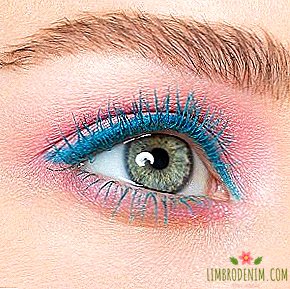Uniform or uniqueness: What will be the clothes of the future?
Moscow, February 2016. Outside, a merciful zero temperature, drizzle and sky, tightly tightened by clouds. Going outside, I throw my coat over my shirt, wondering if I should take a sweater with me for the evening. It takes a couple of minutes to lace up the shoes. Do not forget to have an umbrella. Damn it, in the XXI century courtyard, where is my jacket, able to adjust the level of serotonin in the blood and at the right time deploy a water-repellent field, self-weaving shoes, well, or at worst, an elegant silver suit in the spirit of Paco Raban, which is not hot in summer and warm in the winter? Where is this all that the futurologists, Isaac Asimov and Luc Besson prophesied with us, along with Robert Zemeckis? Why has the progress brought about huge changes in all areas of life, and in our closets by and large all the same clothes are hanging as they were decades ago?

At first glance it seems that I am in vain outraged. The processes of production and consumption of clothing are really developing according to the boldest forecasts. Here's how, for example, in 1959, the editors of the Chicago Tribune imagined the fashion habits of the people of the next millennium, and say that this is not true. It's all about fast fashion, which will be packed to the top of our closets, guessed, and about clothes made from recycled materials.
Smart sports equipment, jeans with moisturizing properties, a spray that can make your shoes invulnerable to dirt and moisture - all these wonders of science, ordinary and imperceptible to our everyday life, only a few decades ago existed except on the pages of science fiction novels . However, most of these useful inventions are related to the segment of highly specialized clothing and have little to do with fashion, whether it is popular or elite.
Nobody walks in Chalayan dresses either in the office, or at a party, or at their own concert benefit performance: yes, the costumes of Lady Gaga and Beyonce look cosmic, but do not possess artificial intelligence. To establish a mass production of a shirt that will grow itself out of compost and will be able to make a cup of coffee at the request of the owner, a huge technological breakthrough that humanity has not yet achieved is needed. In addition, in order for such a shirt to become a generally accepted, conditionally “fashionable” piece of clothing, rather than a subcultural wonder or the rich man’s play, a puzzle of certain sociocultural, economic and even climatic factors must be formed. While the future of clothing - for the next twenty to thirty years for sure - for the most part lies in the field of design. And, oddly enough, it has already arrived. Well, or comes.
Take the most stable and dynamically developing fashion trend of the last decade - athleisure, that is, the mutual germination of sports and everyday wardrobe. Let's add a dozen dozens of mini-subcultures from b-punk to health-ready, which the podium successfully digested and spat out into a mass retailer, recall the hypersize, erosion of gender markers and the madness of fashionable weeks, when the editors express themselves more deeply than Elizabeth Banks in the trilogy "Elizabeth Banks in the trilogy" ".
Do not forget about the world of stars: Kanye West at Givenchy and Chudakov robes own production, the girls of the family Kardashian with superhuman makeup and beige tights, tight exaggerated form, Rihanna with green lips and a huge bomber Vetements, Rita Ora, Gwen Stefani, Lady Gaga, A $ AP Rocky and the list goes on. Something like this, with some exaggerations, looks like a fashion culture in films about the future, whether it is “The Fifth Element” (in vain that Rihanna became the heroine of the new project by Luc Besson), “Star Wars” (hello, Yeezy) or the last “Mad Max” ".


Another thing is that not everyone wants to dress like that and can afford it. Very young - yes. Very rich, or, on the contrary, very poor - certainly. Very famous. Japanese. And finally, those who just have too much free time. What do all the others look / look like?
Dutch conceptualist photographer Hans Eikelbum for almost twenty years (from 1993 to 2013) photographed people on the streets of various cities in the world. And put the matrix of photos of similarly dressed people. The result of his work was the project "People of the Twenty-First Century" - a painstakingly systematized and somewhat frightening chronicle of human preferences in clothing. Or rather, their identities.
The fact that most of us dress according to patterns is not news. The subconscious, but rather the instinctive desire to choose a proven and tested, including in the wardrobe, resulted in a whole direction - the normcore. The term imposed on the teeth, however, misinterpreted by many fashionable publications and mods, in fact, quite clearly marked the trend - not at all demonstrative and not artificially created - towards unification, standardization and simplification of the external for internal comfort, harmony and development.
It is this future that appears before us in the Spike Jonze film “She”. There are no silver overalls or anti-utopic chlamyds in the world. "She" is not even a trace. In the frame of the most ordinary, "casual" pants, cardigans, shirts and sweaters. Yes, the waist is slightly higher than usual, yes, it seems that jeans are completely out of use, but on the whole, everyone looks as if they dress in Uniqlo and work in Silicon Valley. It seems that in the society of the future they will completely stop caring about fashion. Which is quite logical: if by and large you live in an imaginary reality, communicate using displays and headphones, why think about what to look like? The most important element of clothing is pockets, because they keep the most expensive, just the very same displays and headphones, without which life is not life. Even in the future, it seems, no one is having sex (which is not surprising at all against the background of the latest news from Japan), and therefore women are not required to look sexually emphasized: as a result, no one uses makeup and wears no jewelry.

There are many formidable cinematographic and literary prophecies that promise that humanity will certainly be dressed in uniforms: from Orwell’s 1984 dystopia to Equilibrium film with Christian Bale. In the worst case scenario, the universal normcore may become forced. The reality of the Hunger Games trilogy also seems pretty convincing. In Panema, the functions of clothing as a social marker are strengthened many times: it is easy to identify the residents of the Capitol by their fanciful, uncomfortable outfits and insane make-up, and the inhabitants of districts by the modest, judging by all the vintage garments worn to holes. What is called, poor thing, but clean.
But not everything is so obvious and one-sided. Futurologists and sociologists rightly believe that real life is much more complex, and therefore there is no unequivocal opinion about how we will dress in the future. Judging by how the fashion industry is reeling, the concepts of "fashion" and "trends" can really disappear. The society will continue to break up into a multitude of various social groups and subgroups, and the clothing will help everyone more correctly identify their own among strangers.
Surprisingly, in the future, most likely, several directly opposite tendencies will be able to fully coexist. For example, the emphasized sexual image of women in the spirit of Kylie Jenner may evolve into something completely unimaginable, but still quite peacefully coexists with the purist direction that fans of the current Lemaire and The Row will follow. Fashion will be replaced by stylistic norms and codes. It is unlikely that Coco Chanel herself, meaning the sacramental “fashion passes, but the style remains,” could have guessed how far-sighted her words could be. Let's hope that this will happen and the final universal standardization in the future does not threaten us.
Photo: Self Portrait, Area, Yeezy





